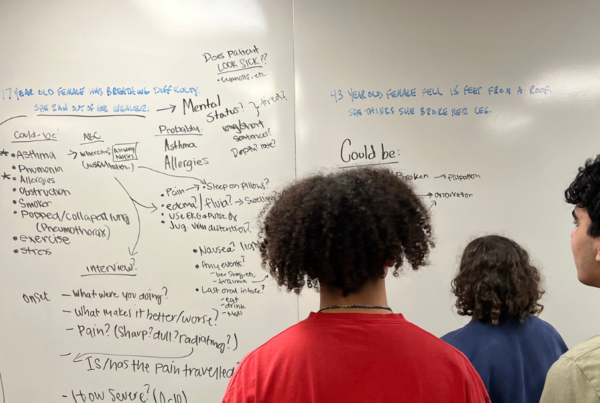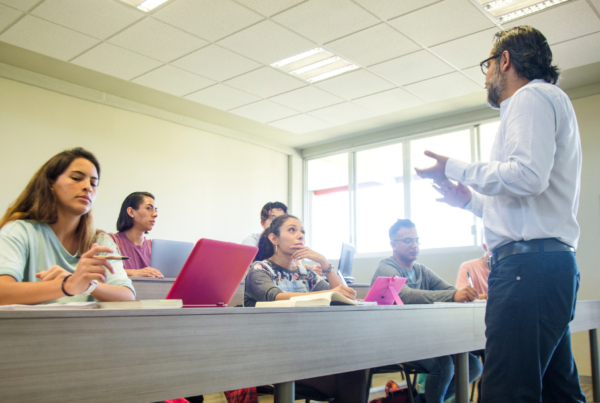Embrace pathophysiology as a foundation for learning.
One of the major differences between the 1994 EMT-B curriculum and the existing EMS Education Standards is the need to know why. As we move into the year 2015 it seems many are still struggling with teaching pathophysiology at the EMT level. Pathophysiology is the foundation for understanding many of the core concepts at the EMT level—and beyond. [Tweet This] It should be at the core of your EMT courses.
Take a prominent seat at the leadership table
We believe it is time for educators to be recognized for the role they play in organizations. From setting the tone with orientation of new hires to QI, CE and beyond, educators are a critical source of information—and solutions. [Tweet This] We have our fingers on the pulse of an organization. If not already doing so, we believe educators should be included in high-level decisions. It is good for everyone.
Advance research
To advance EMS we must advance research—especially research envisioned and performed by EMS personnel. [Tweet This] The changes we have seen in 2014 (e.g. naloxone administration) to the changes in progress for 2015 (dramatic changes in spinal motion restriction procedures) are just the tip of the iceberg. Research helps us drive change in the right direction.
Whether as practitioner, leader, consumer or educator, research is where it’s at. Find out how you can become involved in research at any level. Make it a resolution.
Use the medical model for education (Teach to the 90%)
In her Emergency Medicine text, Tintinnali states “90% of emergency medicine is in the cognitive domain.” This has several implications for EMS including:
- When we teach we should be teaching thinking, not just facts. This includes a differential diagnostic approach.
- Teaching thinking matches the way EMS students are tested at the national level (NREMT).
- When providers make medical errors, it is more likely to be a thinking error (e.g. coming to the wrong diagnosis, using the wrong protocol and thereby giving the wrong medication) rather than a skills error (e.g. administering the wrong dose of a medication).
Our EMS education should use the medical model which includes a differential diagnostic approach, assessment by body system exam and a complaint-based approach to learning.
Don’t forget what it was like to be a student.
In the New Year, remember the educator that made a difference to you. It may have been an explanation, encouragement or a kick in the butt. In the day-to-day grind of education it is easy to forget the little things (and the bigger things) that make a difference. The New Year is good time to try some newer techniques. Replace some lecture with case studies or activities. Flip a few lessons. Bring the joy of education to the joy of learning. You and your students will be glad you did. [Tweet This]



This article is spot on! As a paramedic field training officer I see this lack of pathophysiology and understanding why on a regular basis. Sadley many Ems schools are churning out students that lack these basic core skills of critical thinking all for the chance to make a profit. We can do better!
Thanks Russ for the feedback! We hear about this a lot from both students and agencies – the lack of pathophys and critical thinking skills makes passing the NREMT and practicing EMS more difficult. Keep fighting the good fight!
Spot on. Pathophysiology and critical thinking have been a part of our program for the past ten years. I agree with Russ. Far too many come out with just protocol EMS and little understanding of why.